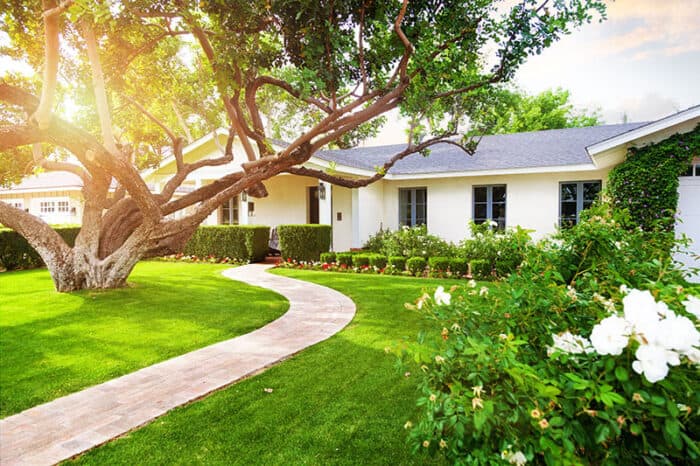
Choosing the Right Tree for Your Lawn.
How to answer “What Tree Should I Plant in My Front Yard?”
The trees you select for your yard carry a meaning. For some couples, for instance, they select a tree the year of their marriage, allowing it to grow and bloom along with their life together. Other homeowners pick the tree they know will bloom the prettiest flowers or best thrive in the region where they live. Trees suggest personality and vitality. The right tree can reflect well upon the people who live in the house that shares its lawn.
Trees can create an ideal outdoor living space, frame a view and improve a house’s curb appeal, or it can just provide valuable shade and a structure to your yard. Choosing a tree or two to buy for your yard can be a complicated selection process, though.
With thousands of varieties among your choices, finding the right tree can be difficult. Additionally, a tree is an investment of time and money. To select the best tree for your home, use these strategies.
Consider the Growing Space
Choosing a sapling from your local nursery rarely gives homeowners a complete idea of what the life of that tree might become. In many cases, the tree might outlive your time in a home. Heck, there are some trees who might even outlive you.
The size of the planting area is a critical consideration when you choose a tree. What is the width of the space where you intend to plant? Is that spot near a building, fence or other large plants? When choosing a tree, you need to measure out how much room there is for the tree to fill without its growth being obstructed.
How high will the tree grow? Check the height potential for the location where you intend to plant the tree. Make sure there is nothing in the way of its potential to flourish, like power lines. You’ll need to make sure they aren’t overhead and that your full-grown tree won’t touch them.
Additionally, consider whether tree limbs might grow over and endanger your home in the future. A tree growing over a house has potential issues, and they can be avoided by choosing a tree with a narrow growth pattern, instead of a spreading crown.
Finally, consider where the tree you plant might cast a future shadow. Shade is generally welcome, though it can endanger planting spots, like a vegetable garden that needs full sunlight to thrive.
Trees are placed in two general size categories. Ornamental trees are considered small trees, maturing under 30 feet tall and 10 to 20 feet wide. Shade trees are considered large trees, for they usually grow 30 to 60 feet tall and wide.
What Is Your Tree’s Purpose?
When choosing a tree, it’s best to consider what job you want the tree to have. How would you like your new tree to add to your landscape?
It could serve as shade for your patio. It could complement your outdoor play space. Do you want the tree to protect your home from view or create a block for the wind? Does your landscape need more color for the seasons, including autumn leaves?
Do you want trees that support birds and pollinating bugs? These are things to consider before adding a tree to your landscape.
Outdoor Living Considerations
The most useful trees are often the ones who offer the most basic elements of outdoor living spaces. An oak over your patio encloses the space with a leafy ceiling. A trio of trees along a property line create a living privacy screen.
Granted, trees can cause mess in and around your rooms and lawn if they shed too many twigs, leaves, fruits and seeds. Consider your sidewalks and pathways, making sure you don’t have to constantly trim back branches.
Match Growing Conditions
First, check the hardiness of your tree against the conditions in your area, for you want to select trees that will survive the winters. Consider how much light your tree will get in your planting site. Consider its soil type and the natural moisture it will get. Select trees that will thrive under the conditions in your area.
You can either select a tree that’s suited to your environment’s existing conditions. Or you can adjust your environment’s conditions to suit the tree you want to grow, composting to improve drainage or setting up an irrigation system to get your tree more water.
Consider Winter
Finally, you want to consider what will happen to your new tree in changing seasons. Deciduous trees, which shed their leaves come fall, have an entirely different appearance in the winter. How will your tree contribute to the winter landscape of your yard?
If you’re seeking a privacy shield, an evergreen tree might be your best choice, but deciduous trees are best for shade in summertime.
To find local lawn care companies that know which trees will thrive in your area, check LawnCare.net to be connected with the best experts who understand your region and can recommend a lawn care plan tailored to the needs of your outdoor space.
